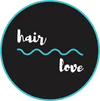The Benefits and Drawbacks of Reverse Hair Washing: How to Do It

Everyone’s hair care routine is unique, based on their hair type, texture, and demands. Hair washing is a typical component of hair care regimens, and it consists of shampooing the scalp and hair, followed by conditioning the hair shaft.
While this procedure is popular and efficient for washing your hair, it may leave your hair lifeless after a few hours or a day, especially if you have greasy or thin hair. A simple tweak in your washing process may enhance your hair care routine and keep your hair looking fresh for longer. Simply condition your hair before shampooing it — a practice known as reverse hair washing.
Reverse hair washing is gaining popularity as a way to improve the appearance of low-volume, dry, damaged, or frizzy hair.
What Is Reverse Washing?
Conditioners are an essential aspect of any hair care regimen since they nourish and moisturize the hair while locking in moisture. More significantly, conditioners protect the hair shaft from harmful chemicals and impurities by coating it. Coat your hair with a generous amount of conditioner and with a hair detangler brush comb out the tangles.
When you condition your hair before shampooing, you protect it from the harsh chemicals in the shampoo. Shampoo cannot penetrate conditioner-coated hair, therefore preserving the natural oils and moisture in your hair. Furthermore, by washing out the conditioner with the shampoo, your hair stays light for longer, since the remaining conditioner may frequently weigh your hair down and make it seem greasy.
By conducting reverse hair washing, you provide your hair with a gentler and more nutritious cleansing, leaving it bouncy and smoother. It reduces product accumulation in the hair, which is good for hair types that are prone to pore blockage. This method also prevents hair breakage and split ends.
The Benefits of Reverse Hair Washing
It is generally used to increase hair health and moisture by stimulating hair follicle restoration prior to cleaning the scalp. Reverse hair shampooing has the following advantages:
- It aids in the improvement of the texture of dull, flat hair.
- It nourishes the hair without making it seem flat.
- Aids in the treatment of hair loss issues
- Enhances the bouncy, lustrous, and voluminous appearance of the hair.
- Reduces the quantity of shampoo needed
- Prevents frizzy hair
- Aids in the prevention of hair oiliness and greasiness.
- Prevents scalp buildup and pore plugging
The Drawbacks of Reverse Hair Washing
In general, there are no negative consequences of reverse hair washing. The main drawback is that this approach may not work well on thick or coarse hair. However, there is no harm in giving it a shot.
Reverse Hair Washing: A Step-by-Step Guide
The following steps can be used to reverse hair washing:
- Thoroughly wet your hair.
- Apply the conditioner evenly along the length of your hair and leave it on for 3–5 minutes. To reduce greasiness, avoid applying conditioner or hair mask to the scalp and roots. Use a satin bonnet for curly hair and let it sit for a bit.
- Gently rinse your hair with cold water. Avoid scrubbing your hair since you want the conditioner to act as a protective covering on your hair.
- Instead of washing entirely, add a generous amount of conditioner to the hair tips and spritz some water over it if you have dry, rough ends.
- Lather up a tiny bit of shampoo in your hair.
- Rinse your hair and, if necessary, repeat the washing process.
- Use a conditioner before your last rinse, or a leave-in conditioner while your hair is still damp.
- Allow towel-dried hair to air-dry after applying a serum.



